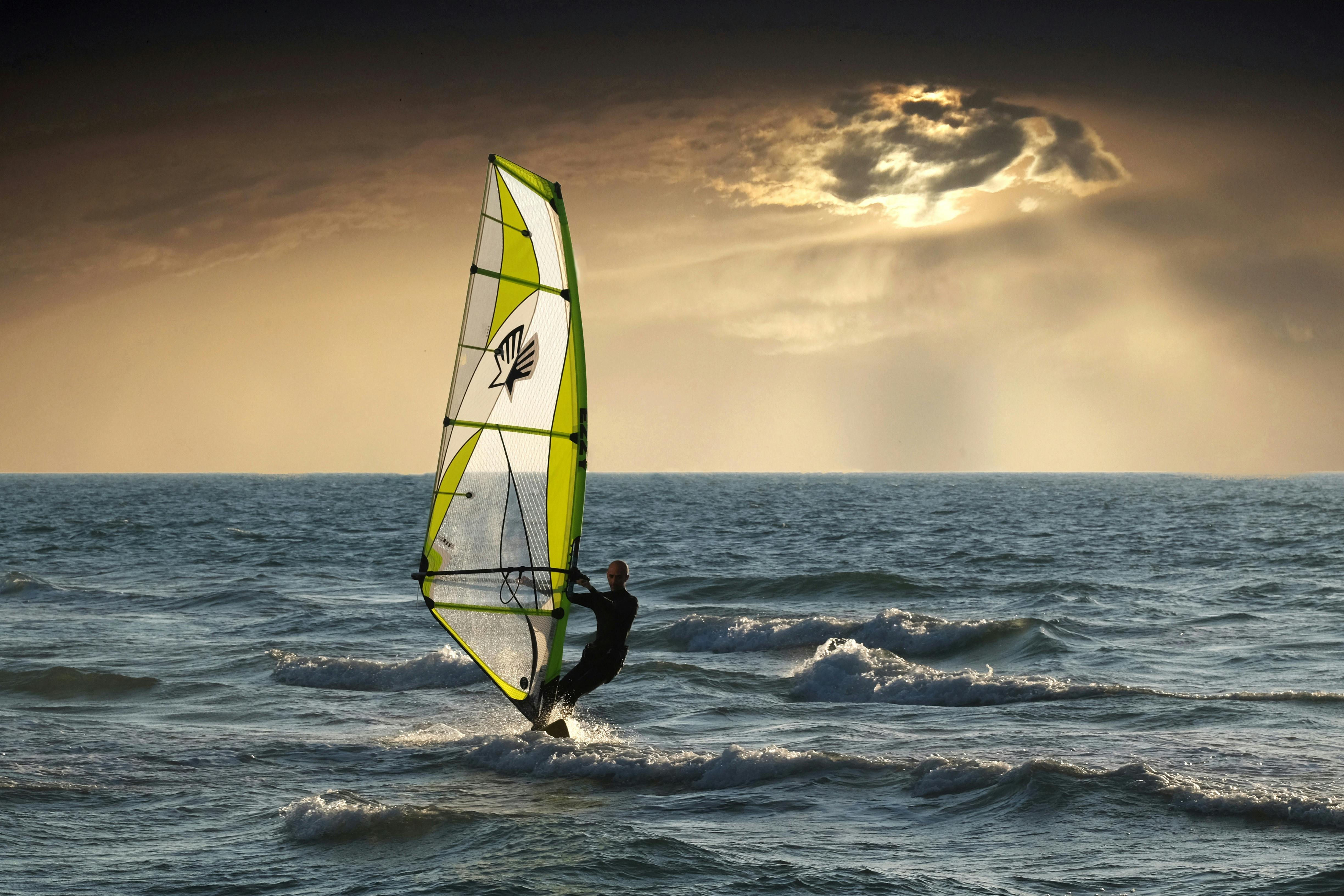Many tourists flock to well-known destinations in Southern California like San Diego, Disneyland, Los Angeles, and Santa Barbara. These are all great places to visit, but if you’re looking for somewhere different that’s a little off the radar, check out the following amazing destinations:
the channel islands
My husband and I have lived in California most of our lives, but somehow we miss these spectacular islands that are classified as one of the United States National Parks. After seeing some awesome photos online, we took a short boat ride to Anacapa Island from Oxnard as part of a weekend anniversary trip.
If you decide to go, be prepared and bring supplies. This trip is for adventurous people in good physical shape. You will have to climb 157 steps to the top of this small rugged island where there is no food, services, water or toilets. Now, I HATE outhouses, but I assure you: the views of the rocky coastline, huge cliffs, and jagged peaks were worth it. You can easily walk around the edge of the island in just a few hours with Inspiration Point, a great reward for your efforts.
We visited in June, when bursts of bright wildflowers covered the tiny island and thousands of adorable seagulls could be found around every corner. Just beware of their protective mothers who will pounce on your head if you get too close.
We returned a couple of years later and visited the larger island of Santa Cruz for an exciting kayak tour of the historic sea caves. On the boat ride we saw a whale and two large schools of dolphins. The waters can be choppy at certain points, but the caves were amazing. This was a once in a lifetime experience.
Some people consider these islands desolate, but if you have an adventurous spirit and love nature, the Channell Islands are considered the Galapagos of North America.
The Huntington Botanical Gardens
This is another awesome place that we haven’t visited for decades. Located in Pasadena, the magnificent property is home to more than a dozen spectacular gardens spread across 120 acres. It’s hard to say which garden is the most stunning, but the Japanese Garden, the Rose Garden and the California Garden are some of my favorites.
We didn’t even get a chance to visit the art galleries. The Huntington Art Gallery houses 18th- and 19th-century British paintings, sculpture and decorative arts, including the famous Blue Boy. And to my embarrassment as a writer, we didn’t visit The Huntington Library, one of the largest and most comprehensive research libraries in the United States.
Next time.
Ventura County Wine Trail
Napa may get all the attention as California wine country, but my husband and I enjoyed savoring our way through the coastal foothills near the seaside town of Ventura. We visited two of the almost 20 wineries and tasting rooms.
You can book one of the many wine tours on offer. However, we decided to get a map and explore on our own. Starting in Ventura at the junction of Highway 1 and Highway 101, we headed up Highway 33 towards Ojai.
Surprises await you on this somewhat lonely but charming road, from the “Smallest Post Office in the USA” to the last place anyone saw James Dean alive. Our favorite find was Old Creek Winery, which felt like returning to a simpler place and time where friendly people and dogs welcomed us. We enjoyed our purchased bottle of wine and a picnic outside at tables enjoying the American view.
By the way, both Ojai and Ventura are worthwhile stops with charming inns, luxurious spas, and bed & breakfasts along with a wide range of outdoor activities. In summer, Ventura Harbor Village is a hive of activity with festivals and live music on the weekends.
lagoon beach
This charming beach town is located halfway between Los Angeles and San Diego. With over 20 different scenic coves, this beach area offers everything from surfing, paddle boarding, snorkeling, kayaking, and whale watching excursions.
Just be careful, the surf can be rough in places. As a teenager, I decided to body surf despite the choppy waters and got wiped out in a huge wave (think of the Beach Boys song: Hehehehehehe, get the hell out!). Actually, I blame the Beach Boys for this whole mishap, as they romanticized this whole surfer girl thing with songs I grew up with, like Surfer Girl. SO your fault.
However, the scenery is unbeatable. Add ultra-chic restaurants and shops and unique art galleries and you get the picture. There’s even a Baby Boomer Club with dances on Saturday nights. Every summer, they host the Laguna Woodstock, where baby boomers party like it’s 1969.
Heisler Park is a good place to start, located just north of the main beach, an easy half-mile walk along a paved path with spectacular views of the coastline and the soothing sound of crashing waves. You can take one of the paths to the beaches and tide pools. Benches, picnic tables and barbecues abound where you can enjoy the magnificent views. My husband and I had a picnic on one of the grassy areas and it was perfect!
Treasure Island Park is another great place, located on the grounds of the five-star Montage Laguna Beach, where the truly wealthy stay. Exquisitely landscaped, several observation benches line the easy-to-walk winding path. Stairs and ramps take you down to the beach, where you can walk through a beautiful rock arch at low tide, find a spot on the sand to sunbathe, and a large tide pool. Also, there are plenty of grassy areas to have a picnic. I would suggest bringing some wine and cheese to enjoy a romantic sunset.
big bear lake
I live in the desert so near Big Bear is a great mountain escape with its beautiful lake and pristine forests. Boating, fishing, and hiking are just some of the activities in this sleepy little town.
Last summer, my husband and I biked around the lake, had a picnic, slid down an alpine slide, went go-karting at speeds up to 30 mph, and took a ride on the panoramic chair for amazing views. After seeing people take the chair lifts to ride mountain bikes on the trails, we put this on our to-do list for next time.
For the adventurous at heart, paragliding and ziplining are also available.
Matador Beach
Looking for a spectacular coastline with white sands, towering cliffs, crashing waves and rugged rock formations in a secluded location?
Look no further than El Matador, located north of Malibu off the winding Pacific Coast Highway. It’s easy to miss the little brown sign pointing to the small parking lot at the trailhead, so be careful between Broad Beach and Decker Canyon Roads. Once you find it, prepare to walk down a 150-foot cliff with the help of some steep stairs.
It’s not for small children or the physically challenged, but if you can get down the steps you’ll be treated to some stunning views. Locals know this beach and you might see some photo shoots, we did!
Fortunately, there is little to do on this small but glorious stretch of beach, so bring a picnic lunch or some wine and find a hidden corner to enjoy the incredibly romantic setting.
round beach
By now, you’ve probably noticed that my husband and I are beach bums. We found this beach by accident while looking for a nearby place to spend the night before flying out of LAX the next morning.
The Redondo Pier is a landmark with panoramic ocean views and water activities including harbor cruises, seasonal whale watching, kayaks, paddleboards and paddle boats. To tell you the truth, we didn’t try any of these, but we loved the views from Tony’s on the Pier, where we enjoyed happy hour!
The pier is also home to a 16-foot great white shark affectionately known as Georgette, on display in a large tank at Shark Attack on the Pier. If you have grandkids with you or are young at heart, you can enjoy the semi-submersible yellow submarine (damn, I have the Beatles song stuck in my head now) to observe the local marine life underwater.
It sure beats staying in an airport hotel if you’re flying into or out of Los Angeles.
catherine island
This island is better known than some of my previous recommendations, but it’s a sentimental favorite. My husband and I honeymooned there 40 years ago and have been back several times. This is a quaint little island with no traffic lights or fast food restaurants. A typical traffic jam involves two golf carts and a bicycle built for two.
On our honeymoon, we happily biked around Avalon, went horseback riding, toured the famous casino, and sunbathed on the small beach. We also took a bus to Two Harbors, the only other town on Catalina Island. Other popular activities include snorkeling, parasailing, fishing, glass-bottom boat rides, rowing, Segway tours, golf, and hiking.
Decades later, we sailed our boat to the island from Long Beach, which turned out to be one wild ride. My husband and adult sons returned again for our open water dives to become scuba certified amidst the famous kelp forests surrounded by the bright orange Garibaldi fish. Next time we visit I want to try the new zip line that is 600ft above sea level with a 1,100ft long run with speeds up to 30mph Wheee!
As you can see, Southern California has so many wonderful places to visit that it’s impossible to list them all. But I hope I’ve given you some ideas to get you started!









